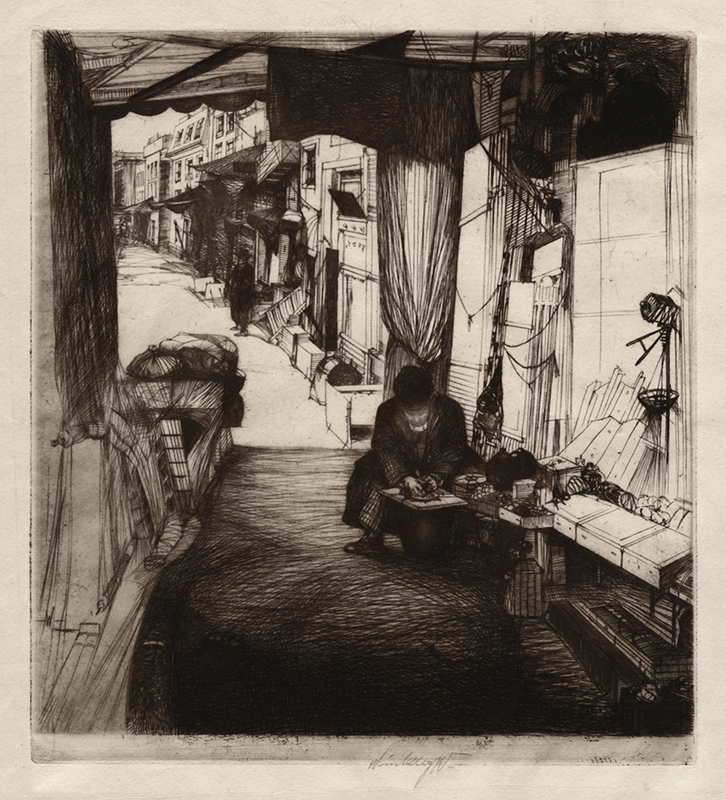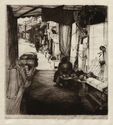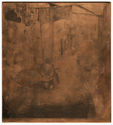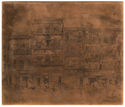
19th, 20th & 21st Century Fine Prints
707-546-7352 · fax 707-546-7924 · web: www.annexgalleries.com · email: artannex@aol.com
Delicatessen Maker (Plate C) (print and copper plate) by John William Winkler




Delicatessen Maker (Plate C) (print and copper plate)
John William Winkler
Delicatessen Maker (Plate C) (print and copper plate)
John William Winkler
1894 - 1979 (biography)Winkler did more than one version of this scene, now considered one of his most well known, from his time in San Francisco's Chinatown. The first was created in 1917 (illustrated on page 64 of Millman & Bohn's "Master of Line: John W. Winkler, an American Master") and the final version, printed in the opposite direction of the 1917 version and now including more detail, was printed in Paris in 1923 in an edition of 85 impressions. This is one of those impressions, and is accompanied by its plate, which features an additional etching on the verso. The verso image is "Facades", which he created circa 1920/'21 but did not publish until the early 1950s (ref.: M & B, p. 102, 103). His etched cursive "W" is in the verso image, lower left (right when printed).
The Delicatessen Maker is considered one of Winkler’s most well-known images from his San Francisco Chinatown series. He created an earlier version of the Delicatessen Maker in 1917 (illustrated on page 64 of Millman & Bohn’s Master of Line: John W. Winkler, an American Master) but the image is reversed with the figure placed on the left side of his shop.
Winkler was a lamplighter in San Francisco and his route took him through San Francisco’s Chinese quarter where he discovered an exotic community. According to Mary Millman and Dave Bohn, Winkler spent “every spare weekday moment and every Saturday and Sunday there for about seven years.” He created around seventy plates depicting the streets, architecture, inhabitants, vendors, and moments of rest or leisure. In his etchings, he captured vignettes of a lifestyle that was quickly vanishing and his subjects were always rendered with dignity and respect.


